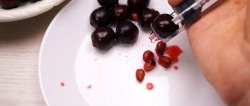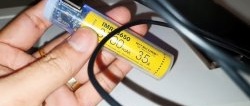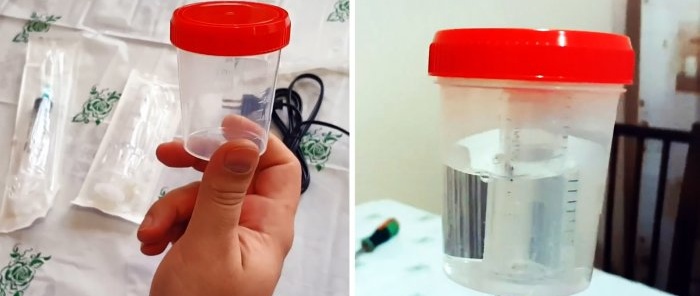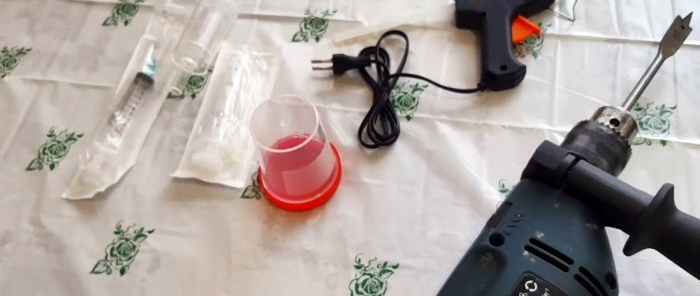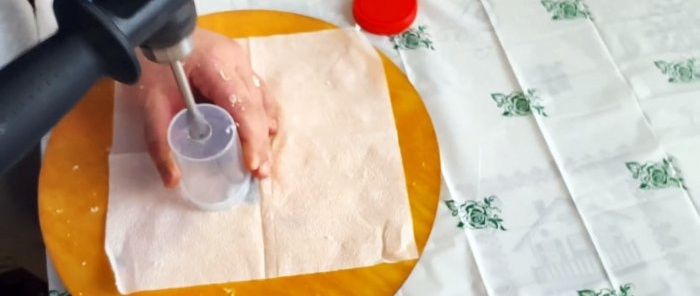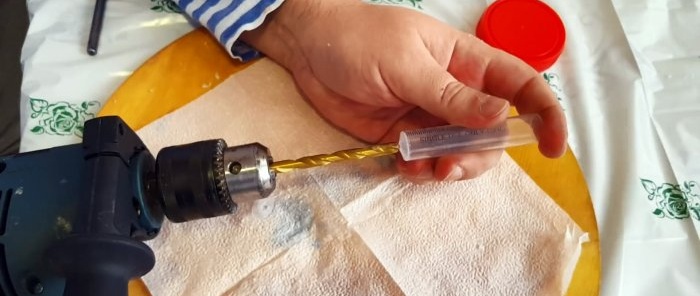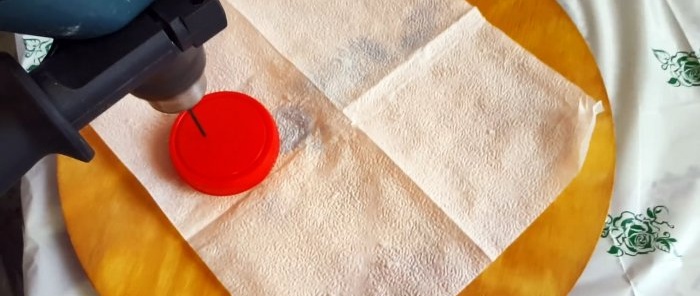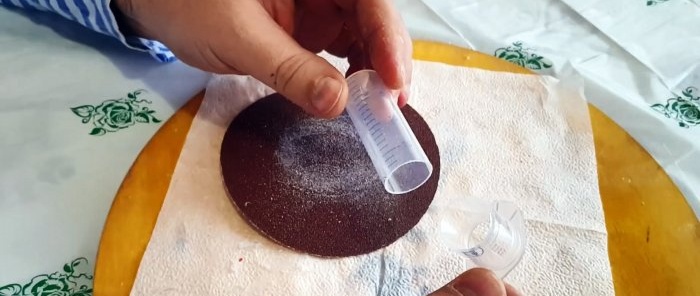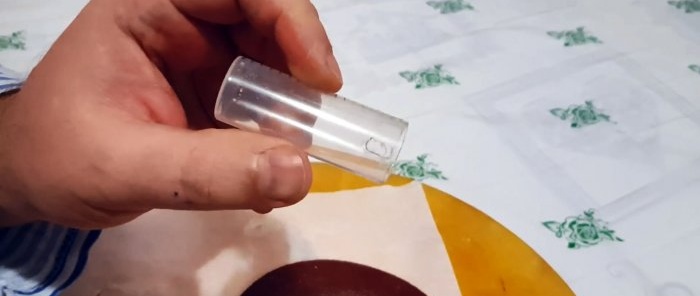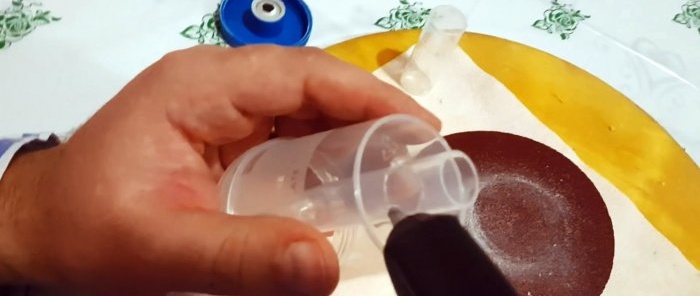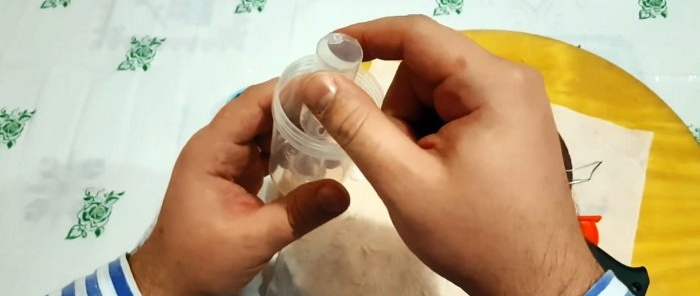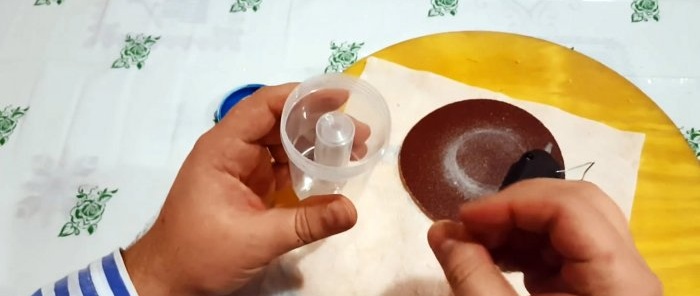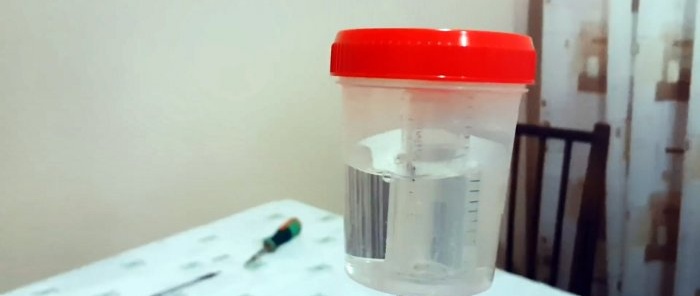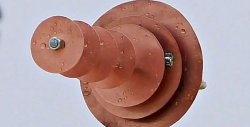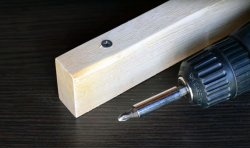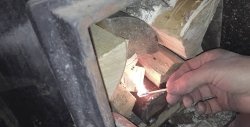How to make a silent water seal for a fermentation tank
Moonshiners and distillers, when setting mash or wine for fermentation, use water seals of various designs. Each of them has its own advantages and disadvantages, but the glass-type system is considered the most successful. It allows you to minimize noise when carbon dioxide escapes.
Materials:
- Plastic jar for collecting samples;
- syringes 20 and 10 ml;
- glue.
Water seal manufacturing process
The first part of the water seal is made from a 10 cc syringe. Its nose is cut off, as well as the finger rests. This part will fit into the hole in the lid of the fermentation container.
A 16 mm hole is drilled in the bottom of the test jar.
You also need to drill the hole from the nose of the 10 cc syringe to 8 mm.
You will also need to make small perforations in the lid of the jar so that gas can escape from it.
You need to cut off the nose of a 20 cc syringe and saw it down to the 18 cc mark. The cut should be sanded with sandpaper.
It is necessary to drill 2 oval holes in the walls of the syringe 2 mm from the sawn edge. The hole from the spout is sealed.
The smaller syringe is inserted into the jar with the wide hole facing outwards. It should stick out by 2-3 cm, then the joint is glued.
The water seal is inserted into the lid of the fermentation tank. Water is poured into the jar, and the thin syringe is covered with a cap from the large one.
After this, the water seal is closed with a lid. This design allows fermentation to proceed very quietly, while it is not inferior to an expensive commercial water seal of a similar type.
Watch the video
Similar master classes


